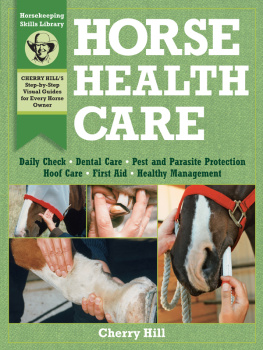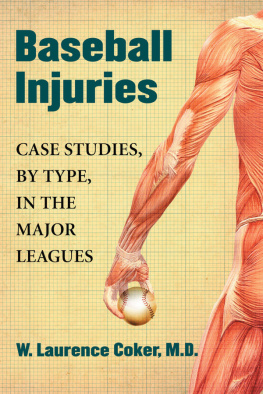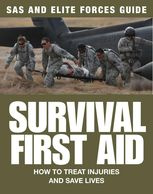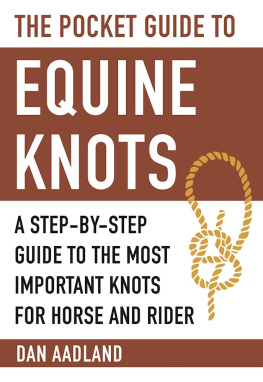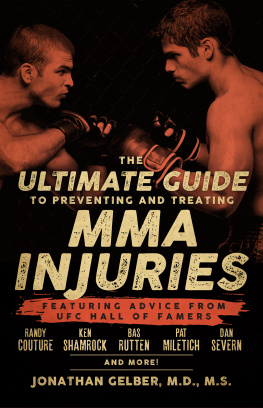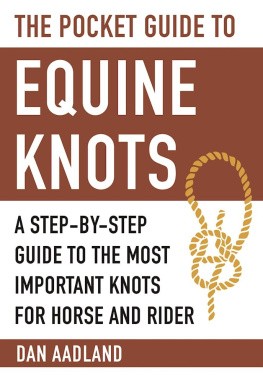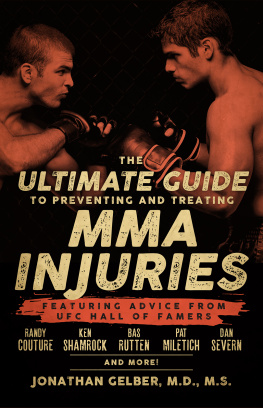About the Authors
Nancy S. Loving, DVM, has been both a dressage and event competitor and has been involved in the endurance world as an FEIsanctioned veterinarian and as team vet for the USEF national endurance squad. Prior to becoming an avid endurance rider training her horses in the National Forest outside her back door, Dr. Loving spent two months horse camping across the wilderness backcountry of Colorado. Dr. Loving graduated from Colorado State University Veterinary School in 1985, and since then has practiced equine medicine and surgery exclusively. She regularly writes for The Horse and Horse Illustrated magazines, and her previous books include All Horse Systems Go: The Horse Owners Full-Color Veterinary Care and Conditioning Resource for Modern Performance, Sport and Pleasure Horses; Go the Distance: The Complete Resource for Endurance Horses; Conformation and Performance; and Veterinary Manual for the Performance Horse.
Gilbert Preston, MD, has practiced primary care medicine in rural Montana for more than twenty years. A former research associate at the National Institutes of Health in Bethesda, Maryland, Dr. Preston is a member of the Wilderness Medical Society and is currently on staff at Saint James Community Hospital in Butte, Montana. He has published more than two hundred medical articles in Pacific Northwest newspapers and magazines.
Dr. Preston is also the founder and medical director of Wilderness Medical Systems in Butte, Montana.

First Aid Kit for Riders
Ideally, each person or party builds or buys a first aid kit customized to suit particular needs, based on party size, length of stay in the wilderness, likelihood of professional rescue as opposed to self-rescue, pre-existing medical conditions and allergies, and the specific environmental demands of the trip. An overnight stay five miles from the trailhead in the Adirondacks of northern New York in July can present different first aid challenges than a days ride in Idaho.
The list below is a good place to start. Larger kits and customized options are commercially available from a number of outdoor specialty shops, but resist the temptation to bring more equipment than you feel comfortable using. After you have completed courses in first aid, wilderness first response, and CPR, you will be better able to judge what kit and components are right for you.
Bandages and Surgical Supplies
Tape, AdhesiveUse to secure splints, tape down bandages over lacerations and abrasions, etc.
Basic Blister DressingTransparent, sterile film dressing such as Tegaderm for covering shallow blisters; permeable to water vapor and oxygen, impermeable to microbes.
Spenco 2nd SkinHydrocolloid dressing used to cover burns; protects wound from contamination, provides rapid pain relief.
Surgical SoapNon-iodine, non-phenol based mild surgical soap will clean debris and contaminants from the wound surface and will not injure tissue.
Sterile Non-Stick Bandage4x4-inch; applied directly to cover a clean laceration or abrasion wound surface after it has been cleaned and the wound edges brought together with adhesive strips, sutured, or stapled.
Sterile Bandage3x3- or 4x4-inch; apply over non-adhering bandage for covering lacerations, abrasions, and open wounds; use as pressure dressing on uncontrolled bleeding of smaller wounds; use as a sterile wipe to pat dry wounds after irrigation, before dressing.
Cotton BallsUse for gently cleaning and wiping away dirt, grime, blood, and other secretions on skin, where sterile technique is not required.
Iodine WipesIndividually packaged. Use to clean skin around wound; do not apply to interior of wound.
Vinyl GlovesWear these in any wound care or emergency situation where you may come into contact with bodily fluids, for protection of both the victim and yourself.
Sterile ApplicatorsUseful for applying and spreading topical burn wound medication; also useful for ear wax removal, for removal of foreign body on the white part of the eye, and for examining the inside of the upper lid by gently rolling it over the stick.
Roller Gauze3-inch-wide, flexible, stretchy gauze; use it to wrap a wound and keep sterile pads in place. Also provides cushioning and protection for the injury.
Adhesive Plastic Bandage Strips1-inch wide; for covering minor cuts, scrapes, insect bites, and blisters.
SunscreenSPF 15 at least; more at high altitude.
Insect Sting Stick or WipesApply to insect bites or stings for relief of discomfort.
Flexible Splinting (SAM splint)Moldable aluminum splint covered with closed cell foam, marketed under the trade name SAM splint. Can be cut to size and shape as needed for use on wrist, arm, elbow, or ankle.
Wound Closure StripsUse to bring together the skin edges of minor cuts.
Eye PadsTo cover an injured, painful, sunblind, or red eye to provide comfort and protection.
Tongue DepressorsUse to examine a mouth, throat, or tongue condition, or as small splints for finger injuries; also useful for applying ointments to a large area or as tinder for an emergency fire.
MolefoamPressure point padding, often used in conjunction with adhesive or duct tape to prevent blisters in known pressure points. Molefoam is a padded (and thus more comfortable) version of another blister-preventative product called Moleskin.
Duct TapeUse for fashioning splints, preventing hot spots on feet, immobilizing the neck and spine, and other uses.
Cyanoacrylate Glue (SuperGlue)Use for closing those small, clean, but hard-to-bandage nicks, scrapes, and cuts on fingers, knuckles, and hands that seem to stay open forever.
Specialized Medical Instruments
Wound Irrigation SyringeTo provide adequate pressure for washing dirt, debris, and microbes from the wound.
Anaphylaxis Emergency KitCommercially available by prescription only; follow the instructions on the kit exactly.
Forceps4.5-inch; use for removing foreign bodies such as splinters, bee stingers, cactus spines, etc.
Scissors4.5-inch; use to trim or cut off bandages, splints, or hair around a scalp wound before treatment.
Airway KitAssorted sizes, child and adult; use to maintain an open upper airway when you perform CPR or rescue breathing.
Survival (Space) BlanketThin, extremely lightweight reflective blanket used to conserve body heat.
Non-Prescription Medications
Hydrocortisone Cream1 percent strength; apply a small amount to insect bites, stings, poison ivy, or poison oak skin rashes three or four times a day.
Decongestant Nasal SprayFor colds, stuffy nose, and blocked sinuses of any cause.
Bismuth Salicylate Tablets (Pepto-Bismol)Antidiarrheal, anti-indigestion medication.
Diphenhydramine25 mg tablets; antihistamine for symptoms of allergy; also used as sleep medication.
Pain MedicationAspirin, acetaminophen (Tylenol), and ibuprofen each provide varying amounts of pain relief depending on individual responses.
Prescription Medications (Consult Your Physician)
Lorazepam 0.5 mgA sedative useful for treating acute stress reactions. Can be habit forming. Not for use at high altitude because it slows respiration.
Pain Medication: Acetaminophen (Tylenol) with CodeineOral pain relief equivalent to injectable morphine, with the same risks: depressed respiration at high altitude, daytime drowsiness, nausea, or vomiting. Can be habit forming.


